82 F. high in the Twin Cities Thursday.
83 F. average high on July 24 (the average high has come down 1 degree).
78 F. high on July 24, 2013.
July 24 in Minnesota Weather History. Source: MPX office of the National Weather Service:
2000: An F4 tornado hits the town of Granite Falls. One person is killed and there is 20 million dollars in damage.
1915: Frost hits northeastern Minnesota.
Sitting Ducks
Camping
in the North Woods can be a transcendent experience, at one with
nature, disconnected from the rat race back home. Until severe
thunderstorms turn those majestic towering pines into weapons of mass
destruction.
Every summer the question arises: how do I protect
myself when I'm cowering in a tent, trying to furiously dig a tornado
shelter with a spoon? It's best to ride out storms in a shelter or even
your vehicle. If none is available a cave or outcropping of rocks offers
some protection against falling trees. There's no perfect solution.
Smartphone
Doppler radar and warning apps don't always work, but NOAA Weather
Radio has great reception statewide, even up in the BWCA. Take a
portable radio and monitor the weather to lower the risk of unpleasant
and dangerous surprises.
Storms rumble across the region this
morning as warmer, stickier air pushes back into Minnesota. Plan your
lake adventure for tomorrow - the sunnier, warmer, drier day of the
weekend.
Southwest winds Saturday turn around to northwest Sunday - as temperatures fall through the 70s with a few windblown showers.
Next week looks dry and relatively comfortable; 80s returning by late week. Not a heatwave in sight.
Image credit
above: Cherrystone Campground near Cherryville, Virginia Thursday,
where at least 2 campers were killed and 24 others injured by high winds
and falling trees. The Vane at Gawker has more
details. Credit: @bl0windasies and WeatherNation.
Camping During Severe Weather.
This question comes up every summer, and the truth is rather stark: you
can only do so much to protect yourself in a tent, with trees nearby,
trees that may come down when severe thunderstorm winds push through. If
you have access to a shelter (of any kind) or even your vehicle that's
always choice number one. Having a portable NOAA Weather Radio is a very
good idea; here are more tips, courtesy of the
Sioux Falls office of the National Weather Service:
Tornadoes:
- Move to the campground shelter house. Get on your knees and cover your head.
- If
there is not a shelter house, evacuate your tent or camper and lie flat
in a depression, such as a ravine, and cover your head with your hands.
- Never get in your vehicle to escape a tornado!
Lightning, Wind and Hail:
- If tenting, move to the shelter house or your hard-topped vehicle.
- If no shelter is available, seek refuge in a cave or under a thick grove of trees that are taller than your tent.
Flash Floods:
- Never camp next to streams, creeks, or rivers as heavy rain can cause water levels to rise rapidly.
- Never cross rain swollen creeks, rivers, or streams as the under-currents will carry you downstream.
- If flash flooding does occur, move to higher ground immediately!
Image credit above: Cherrystone Camp Ground, Virginia. @MDAnnunziata10.
Still Cleaning Up The Damage.
A friend up on Pelican Lake (who lives near Breezy Point) sent me these
photos late yesterday showing tree and dock/boat damage on the south
side of Pelican from Monday night's severe storms.
New Technology Allows You To Send Texts Without Cell Service.
This is another good idea, in the event the cell towers come down along
with the trees - a fail safe for communicating with family, friends and
emergency service providers.
Gizmodo has more information: "
Inspired
by the downed cell towers and utility outages of Hurricane Sandy, the
folks at goTenna wanted a way to keep smartphones connected even when
the grid fails. What they came up with is a pocket-sized handheld
antenna that lets users send texts and location info without cell
service. And we got to see a prototype in action..."
A Tent Rated for 112 MPH Winds?
Which sounds great, but will it protect me when that towering pine tree
comes crashing down on me? That's an even bigger problem - camping in
the North Woods has an obvious appeal, until the winds start gusting
over 60 mph, and then those majestic trees take on a more sinister tone.
Here's a clip from
Gizmag: "...
The
tent features a reinforced version of the brand's Inflatable Diamond
Grid meant to spread stress over a larger surface and maintain a solid
structure in rough weather. According to the company, the Mavericks can
stand up to 112 mph (180 km/h) winds, though it appears to have
experienced just 96 mph (155 km/h) during an Ireland leg of the Storm
Chase..."
I Want (free) FM Radio On My Smartphone!
Another way to increase situational awareness - the ability to listen
to radio weather reports, on your cell phone, anywhere you can get a
cell signal. I didn't realize this, but smartphones have the capacity to
receive FM signals, but (most) U.S. carriers have yet to activate this
functionality, as described at
Current.org: "...
Every
smartphone today contains an FM chip, but unlike in Europe, most in the
U.S. are not activated. This will change if consumers put enough
pressure on service providers to activate the chips in their phones.
There is no cost for manufacturers to activate the FM chips. Sprint has
worked with the radio industry and agreed to do this with almost all of
its smartphone models. We know change is possible, but it’s fair to say
that many consumers are not yet aware of how little this would require
of cellphone manufacturers and how great the benefit would be for
consumers and listeners..."
Two Summerlike Days - Then Another Premature Hint of September.
Expect 80s today, possibly mid to upper 80s in the metro area Saturday
before winds shift to the northwest behind the next cool front;
temperatures dropping through the 70s Sunday with PM showers; h ighs in
the 70s much of next week before warming up late in the week. The best
chance of T-storms: this morning, more showers Sunday PM hours, then a
dry period Monday into Thursday of next week. MSP Meteogram:
Weatherspark.
60-Hour Accumulated Rainfall.
NOAA's 4 km WRF model shows the heaviest rains between now and Saturday
evening over the Carolinas and Virginias; the approach of another
Canadian cool front sparking locally heavy rain from North Dakota to the
Minnesota Arrowhead late Saturday. Source: HAMweather.
Washington's Largest Wildfire: Seen From Space and Aerial Drone Footage. Meteorologist
Brian Sussman in Portland has a link to some incredible drone footage of recent fire damage; here's an excerpt of his post: "...
But
the thing that really has my attention: groundbreaking and
heartbreaking footage of the fire’s devastation from a drone. Even
though I’ve personally covered many devastating wildfires during my days
reporting for KHQ in Spokane, watching the video had a big impact on
me. It’s powerful..."
Why Are Wildfires On The Increase? Here's a clip from a story looking at U.S. wildfire trends at
The Ridgefield Press: "...
In
a recent study published in the journal Geophysical Research Letters,
researchers from the University of Utah analyzed a database of large
wildfires in the western U.S. between 1984 and 2011 and found a
significant increase in the number of large fires and/or the area
covered by the blazes. From Nebraska to California, the number of large
wildfires increased sevenfold per year over the study period, with the
total area burned increasing by 90,000 acres a year on average..."
America Is Burning: The Fight Against Wildfires Gets Real.
Men's Journal
has a long, data-driven look at wildfire trends across the USA; they're
burning bigger, longer and hotter. What is going on? Here's a clip:
"...
It's the same story throughout the South, much of the Southeast,
and even parts of the Northeast – all of these regions have experienced
record wildfires. Firefighters, forest managers, community leaders, and
scientists tell the same tale: They've never seen so many fires of such
size, intensity, and destruction. Another point of agreement: It's
going to get much worse. "We can't manage wildfire any longer," says
Miller. "It is out of our control..."
Photo credit: "
In
military terms, what these fires do is encircle the community. Then
they close in," says fire-safety expert Bernhard Voelkelt, on land
scorched by the May 2014 Etiwana Fire in Rancho Cucamonga, California." (Photograph by Peter Bohler).
Here Are Maps Of All 38,728 Tornado Warnings Issued Since 2002.
The Vane
at Gawker has another interesting story that provides more much-needed
perspective. In the last 12 years only the area around Duluth, the
Minnesota Arrowhead and a small patch of land from near Winona to Lake
City, north and east of Rochester, has been tornado-warning-free. Maybe
the bluffs on the Mississippi really do disrupt tornado inflow and help
to inhibit formation. Here's an excerpt: "...
These maps show all
38,728 tornado warnings issued between January 1, 2002 and around
midnight on July 23, 2014. Over that twelve-and-a-half year span of
time, there were three states that saw every square inch of land go
under a tornado warning at least once: Mississippi, Alabama, and
Tennessee..."
Florida More Vulnerable to Tornadoes Than Midwest.
For a variety of reasons: southeastern tornadoes are often rain-wrapped
and harder to detect and confirm from ground-level, fewer storm
shelters, and a local population that is not as "tornado-aware" as
residents of traditional Tornado Alley. Here's an excerpt from
gainesville.com: "
Oklahoma
and Kansas may have the reputation as tornado hot spots, but Florida
and the rest of the Southeast are far more vulnerable to killer
twisters, a new analysis shows. Florida leads the country in deaths
calculated per mile as a tornado races along the ground, followed by
Tennessee, North Carolina, Ohio and Alabama, according to an analysis of
the past three decades by the federal Southeast Regional Climate Center
at the University of North Carolina..."
Photo credit above: "A damaged house in Sunrise after a possible tornado." AP Photo.
How Airliner Data Improves Weather Forecasting.
Capital Weather Gang has another interesting article that caught my eye - here's an excerpt: "...
More
upper-air observations improve predictions not only of upper air
changes, but also of the resulting ground-level effects. NWS offices
also receive airliner take off and landing soundings because all
participating airliners transmit reports of the temperature, wind speed
and direction, atmospheric pressure, altitude, and latitude and
longitude from the time the wheels leave the ground until they touch
down on landing..."
Image credit: "
Visualization of ACARS weather data coverage." (
NOAA)
Cell Phone Towers Monitor African Rains.
Here's another novel approach to creating useable weather data where
there are no high-resolution Doppler radars, at least not yet.
ScienceNews has the story; here's a clip: "
Distorted
cell phone signals could help track the rains down in Africa. While not
always noticeable, cell phones get worse reception during rainstorms.
Raindrops garble specific frequencies in radio signals, an effect
compensated for by cell phone companies. Scientists realized these
tainted transmissions could be used to reconstruct rain patterns near
cell phone towers and since 2006 have successfully implemented the technique in developed countries such as the United States..."
Photo credit above: "
Rain Check: Weakened signals during storms from cell phone broadcast towers like these helped scientists monitor African rains." orangecrush/Shutterstock.
Why Has The Sun Gone So Quiet? Discovery News has the article; here's a clip: "...
So
although we know this is the weakest solar cycle on record, we may just
be seeing part of a longer-term cycle that we haven’t been able to
recognize as we haven’t been taking detailed notes of solar activity for
long enough. “It all underlines that solar physicists really don’t know
what the heck is happening on the sun,” added Phillips. “We just don’t
know how to predict the sun, that is the take away message of this event...”
Near Miss: The Solar Superstorm of July, 2012.
Two years ago we came closer to potential disaster than many of us
realized at the time. Hey, who needs electricity? Here's an excerpt of a
story at
Red Orbit that left me a little weak-kneed: "..
.Baker, along with colleagues from NASA and other universities, published a seminal study of the storm in the December 2013 issue of the journal Space Weather. Their paper, entitled “A major solar eruptive event in July 2012,” describes how a powerful coronal mass ejection
(CME) tore through Earth orbit on July 23, 2012. Fortunately Earth
wasn’t there. Instead, the storm cloud hit the STEREO-A spacecraft. “I
have come away from our recent studies more convinced than ever that
Earth and its inhabitants were incredibly fortunate that the 2012
eruption happened when it did,” says Baker. “If the eruption had
occurred only one week earlier, Earth would have been in the line of
fire..."
Image caption above: "This
image was captured by ESA and NASA’s Solar and Heliospheric Observatory
(SOHO) on July 22, 2012 at 10:48 PM EDT. On the right side, a cloud of
solar material ejects from the sun in one of the fastest coronal mass
ejections (CMEs) ever measured." Credit: ESA/NASA/SOHO.
Picture This: Twin Waterspouts and Amazing Aurora. Climate Central has a post with a few awe-inspiring photos and video clips; here's an excerpt: "...
Because we clearly can’t get enough images of cool space weather, we’ve got another great photo this week from our favorite astronaut photographer and tweeter, Reid Wiseman.
Wiseman, from his perch on the International Space Station, got a
spectacular picture of the aurora australis (that’s the Southern Lights,
or the aurora at the South Pole). Aurora’s are created when charged
particles spewed out by the sun are funneled by Earth’s magnetic field
toward the planet’s poles..."
The End Of The Road.
Our infrastructure is in rough shape, especially our antiquated highway
system. Minnesota roads are in pretty good shape (with a few notable
exceptions) but drive in other parts of the USA and Canada and you'll
wish you were on a horse to smooth out the bumps. Here's an excerpt of a
story focusing on the problem at
opencanada.org: "...
Americans
are well aware that U.S. infrastructure is in grim shape. The American
Society of Civil Engineers’ latest report card on the condition and
performance of U.S. infrastructure gives them an overall grade of D+
(the plus because the U.S. seems able to deal better with solid waste).
More puzzling is the political storm over funding infrastructure
maintenance and improvement. The problem of deteriorating, underinvested
infrastructure blew up into a crisis in the United States early in the
21st century..."
Swarms of Mayflies on Doppler. Business Insider has the story of mayflies, so thick they showed up on Doppler radar out of La Crosse; here's an excerpt: "
Once
a year, the bugs emerge — millions of them. Every summer, they swarm en
masse around the banks of the Mississippi River. It's mating season for
mayflies. There are so many of them, in fact, that they can show up on
weather radar. Check out this weather radar GIF from the evening of July
20, which shows clouds of flies leaving the Upper Mississippi River in
Wisconsin and taking to the air to breed..."
Report: Climate Change Skeptics Could Reach Catastrophic Levels by 2020. Here's an excerpt of a morbidly funny "update" from
The Onion: "...
Specifically,
the report revealed an alarming upsurge in the number of authors of
discredited scientific studies questioning the reality of climate
change, adversarial cable news show guests who scoff at the notion that
humans can affect Earth’s weather patterns, and politicians whose
opinions are controlled by fossil fuel company lobbying groups, all of
whose increased presence in the world jeopardizes the planet’s
vulnerable biosphere. Additionally, the report noted a shocking jump in
the number of uninformed citizens among the public at large, whose
widespread dissemination of misleading data, half-truths, and outright
lies regarding climate trends has already facilitated the destruction of
numerous natural resources and hundreds of species, while putting still
others at imminent risk..."
TODAY: T-Storms early, then sticky sun. Dew point: 65. High: 84
FRIDAY NIGHT: Partly cloudy and humid. Low: 68
SATURDAY: Nicer day of the weekend. Warm sun. Dew point: 64. Winds: SW 10. High: 87
SUNDAY: Cooler with some AM sun, PM clouds and showers. Winds: NW 15+ Wake-up: 65. High: 75
MONDAY: Blue sky, comfortable. Dew point: 47. Wake-up: 59. High: 74
TUESDAY: Sunny and pleasant. Wake-up: 57. High: 77
WEDNESDAY: Partly sunny, few complaints. Wake-up: 60. High: 78
THURSDAY: Some sun, stray T-shower. Dew point: 59. Wake-up: 62. High: 82
Climate Stories...
Report: Gulf and Atlantic Coasts Not Prepared For Sea Level Rise.
Not a fan of big government, regulation and taxation? Some of the same
people who rail against "the feds" will be the first to have their hands
out, after the next inevitable mega-flood, super-storm or historic
drought, expecting compensation, which is ironic, considering the fact
that all U.S. taxpayers will be chipping in to clean up the mess and
rebuild. Along the coast the cycle of destruction and rebuilding may
become increasingly difficult to justify - and pay for, over the long
run. Here's an excerpt of a sobering story at
National Geographic: "...
Today the federal government tends to bear the brunt of the costs after big disasters like Hurricane Katrina and Superstorm Sandy,
but it wasn't always that way. "The share of money paid by the federal
taxpayer has increased substantially," says Baecher, noting that the
federal government paid roughly 10 percent of reconstruction costs after
hurricanes in the mid-20th century. But after Sandy, the feds ponied up
about 75 percent of the costs. Federal taxpayers are not always getting
a good return on their investment, says the report. There has been too
much spent on rebuilding and too little spent on planning, preparedness,
and mitigation of risk along the coasts, leaving communities vulnerable..."
File Photo: Butch Dill, AP.
Scientists Urge For Funds To Prevent Coastal Disasters, Not Just Recover From Them. Following up on the story above; here's a clip from a
Huffington Post article: "...
Such
a shift would help the U.S. "move from a nation that is primarily
reactive to coastal disasters to one that invests wisely in coastal risk
reduction and builds resilience among coastal communities," a statement
accompanying the report said. Since 2001, water has reached flood
levels an average of at least 20 days per year in six eastern U.S.
cities, including Atlantic City, New Jersey and Charleston, South
Carolina -- which has more than $200 million in flood-control projects
underway, the Reuters analysis found..."
File photo above: Peter Morgan, AP.
Climate Change Hits All Pentagon Operations, Official Says.
The Hill
has an update on how the Department of Defense is factoring climate
change and more volatility/instability into their longer term plans;
here's an excerpt: "
All Pentagon operations in the U.S. and abroad
are threatened by climate change, according to a Defense Department
official. "The effects of the changing climate affect the full range of
Department activities, including plans, operations, training,
infrastructure, acquisition, and longer-term investments," Daniel Chiu,
deputy assistant secretary of Defense for strategy and force
development, told senators at a hearing on Tuesday..." (Image: Wikimedia Commons).
The NHL Just Said Climate Change Threatens The Future of Hockey. Press Progress has the story; here's a snippet: "...
The
National Hockey League now says it is worried that climate change could
have a devastating impact on the future of hockey in coming decades.
"Our sport can trace its roots to frozen freshwater ponds, to cold
climates," NHL Commissioner Gary Bettman says in a letter accompanying
the league's Sustainability Report, released Monday night. "Major
environmental challenges, such as climate change and freshwater
scarcity, affect opportunities for hockey players of all ages to learn
and play the game outdoors." But the NHL isn't dropping its gloves to
fight climate change just because it's a worthy cause — it's also in
their "vested interest" as a business..."
 Scientists Identify Potential Tipping Point
Scientists Identify Potential Tipping Point. Here's an excerpt of a story at
Nature World News that got my attention: "
Scientists
have long been concerned that global warming may push the Earth's
climate system past a "tipping point," and a new study from Oregon State
University (OSU) may have finally identified that threshold. According
to the research, synchronization of climate variability in the North
Pacific and North Atlantic Oceans is that tipping point - where rapid
melting of ice and further warming may become irreversible. This is what
happened a few hundred years before the rapid warming that took place
at the end of the last ice age about 15,000 years ago..."
Photo credit above: "
Scientists
have long been concerned that global warming may push the Earth's
climate system past a "tipping point," and a new study from Oregon State
University (OSU) may have finally identified that threshold." (Photo : Christine Zenino (Wiki Commons).
The Dark Snow Team Investigates The Source of Soot That's Accelerating Greenland Ice Melt. It's all interconnected and interrelated, as we're discovering (the hard way). Here's an excerpt of a
Guardian story from St. Thomas scientist John Abraham: "...
A
number of natural processes cause ice to darken. The simple process of
melting causes ice crystals to deform and reflect less light. In
addition, pollen, sea spray, desert dust, pollution from industry and
shipping cause darkening. However, there are also other causes.
Recently, newly published research
strengthens the idea that wildfire soot has driven extensive melt over
the ice sheet, and in addition, that layers of refrozen water are
themselves darkening factors that drive further melt..."
Photo credit above: "
The
Mount McAllister wildfire burns 34 miles (56 km) west of Chetwynd in
British Columbia, in this handout photo taken July 14, 2014. Wildfires
like this are one source of black soot." Photograph: Reuters.
The Danger of "Balanced" Climate Science In The Media.
Because television likes a good on-air food fight. It's good for
ratings. We should debate climate science right after the big gravity
debate, and after we clear up whether the Earth really is round. NASA
could have faked those photos from space. Wait, did we really even go
into space? Did I mention the Earth sure looks flat from my window? All
those scientists must be wrong. In it for the money! Sorry, I'm off my
meds. Here's an excerpt from
EcoWatch: "...
The
media, in attempting to offer “balanced stories” does a disservice to
the public and policymakers by giving small handfuls of climate change
contrarians significant attention despite the fact that nearly all
climate scientists agree that climate change is underway and that it is
human-caused. When they share equal airtime it sends the message that
the science is more uncertain than it is. The questioning of science by
the American right wing clearly does not accurately reflect the
scientific consensus, and is detrimental to those interested in moving
our economy down a sustainable path. Why then does the media still give
skeptics equal amount of air time?..."
Climate Change: If We Pretend It Isn't Happening Will It Go Away.
That seems to be the mandate of many in Congress today: if we just
remove the funds we won't be able to study climate change and maybe we
can just ignore the trends altogether. Yes, let's be conservative about
everything! Except the environment and the atmosphere, of course. We'll
just take our chances there. Here's an excerpt from
The Bulletin of The Atomic Scientists: "...
On
July 10, the House approved the fiscal 2015 Energy and Water
Appropriations bill on a 253-170 vote. In the bill, Congress
unfortunately cut funding for such things as renewable energy,
sustainable transportation, and energy efficiency; perhaps even more
worrisome, however, were a series of amendments successfully attached to
the bill. Each would, in its own way, specifically prohibit scientists
at the Energy Department from doing precisely what Congress should
mandate them to do—namely perform the best possible scientific research
to illuminate, for policymakers, the likelihood and possible
consequences of climate change..."
 Neil DeGrasse Tyson: "Cherry-picking Your Science Because It Conflicts With Your Philosophy?" Salon
Neil DeGrasse Tyson: "Cherry-picking Your Science Because It Conflicts With Your Philosophy?" Salon has an interview with the host of "Cosmos"; here's an excerpt: "...
In
science, when you perform experiments and observations, and when the
experiments and observations begin to agree with one another, and
they’re conducted by different people — people who are competitive with
one another, people who are not even necessarily in your field but do
something that relates to your field — you start seeing a trend. And
when that trend is consistent and persistent, no matter who’s doing the
experiment, no matter where the experiment is being done, no matter
whether the groups were competitive or not, you have an emergent
scientific truth. That truth is true whether or not you believe in it...."
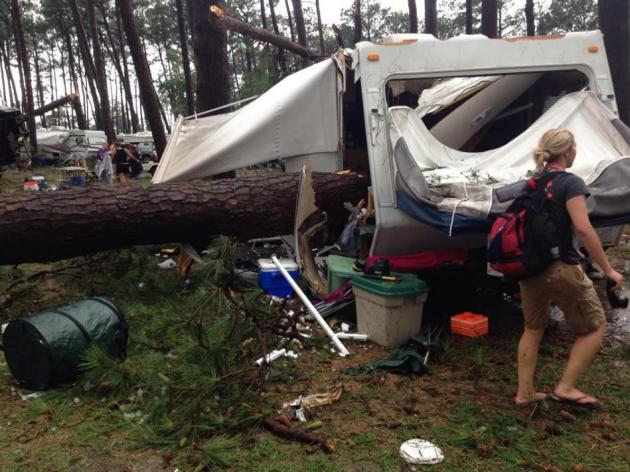
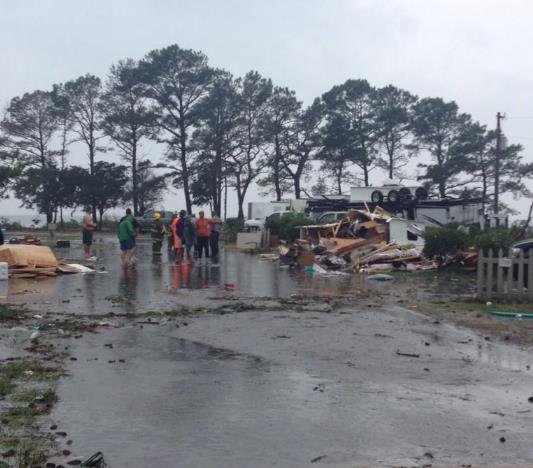
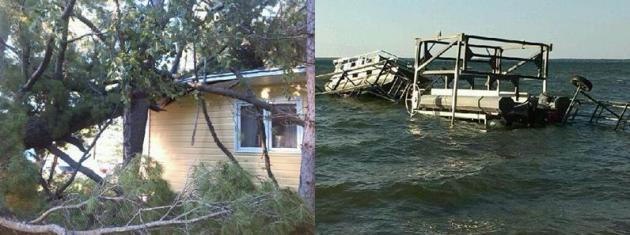



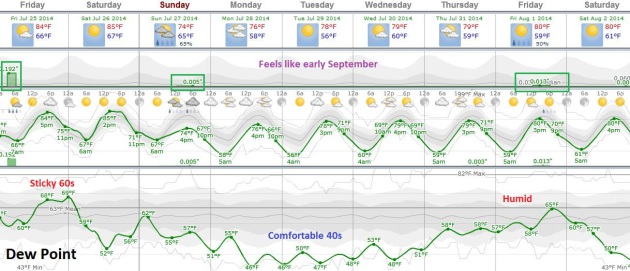
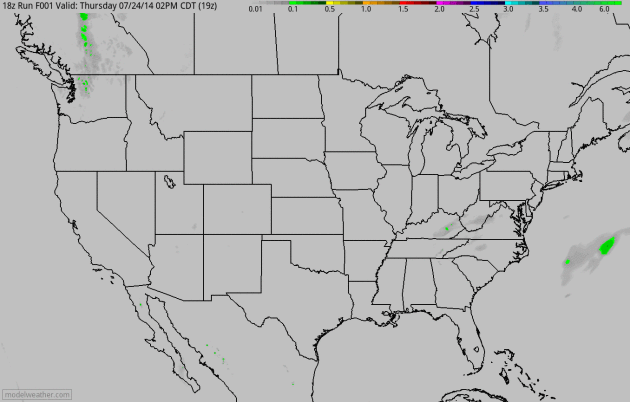
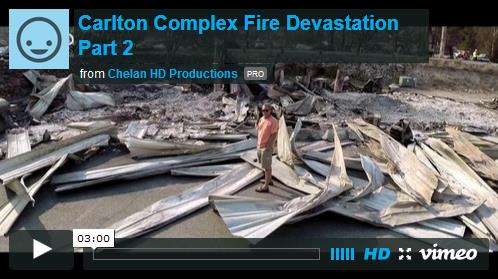
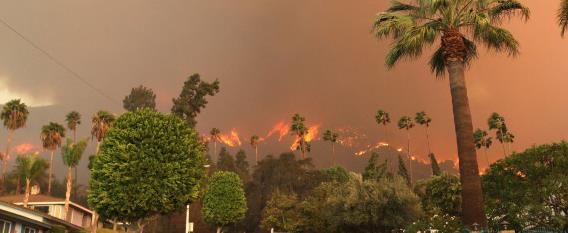
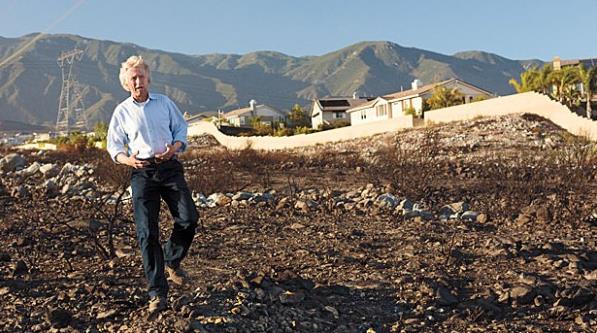
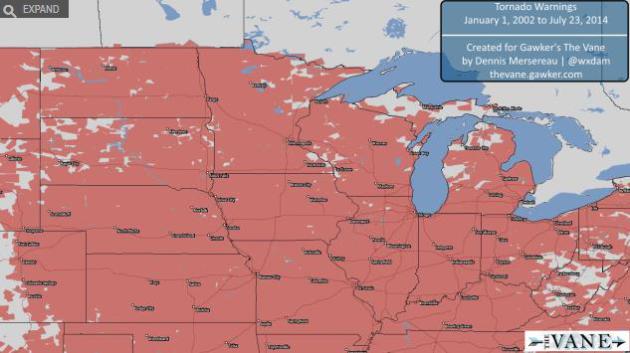
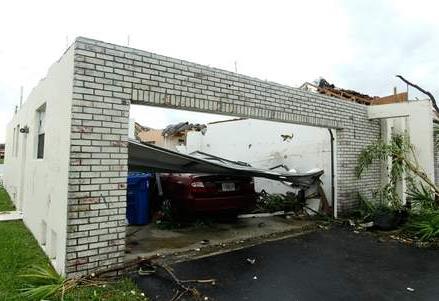
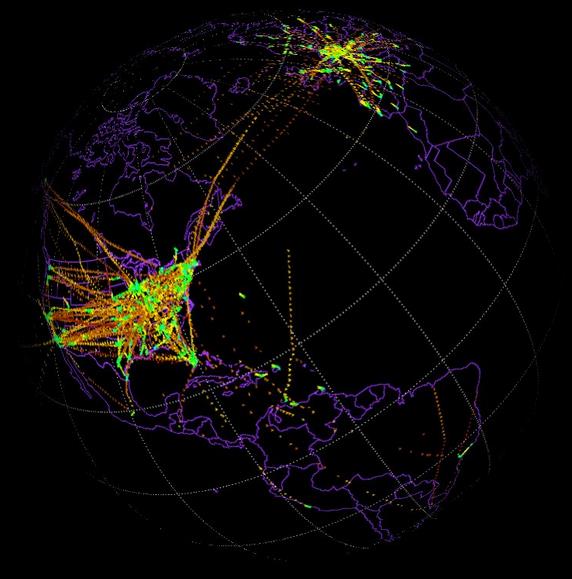
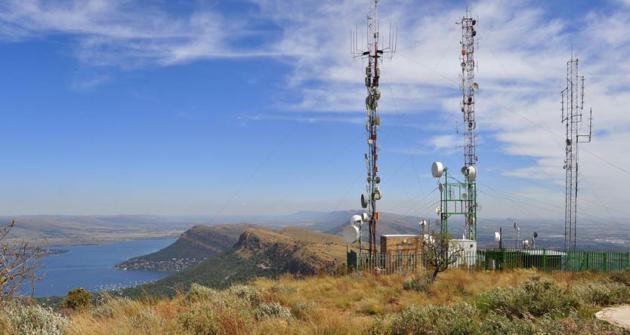
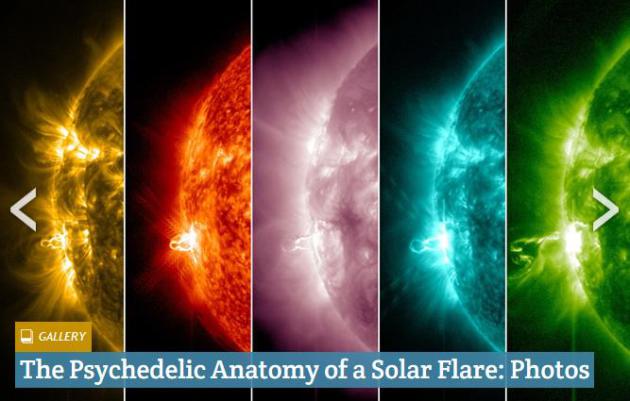
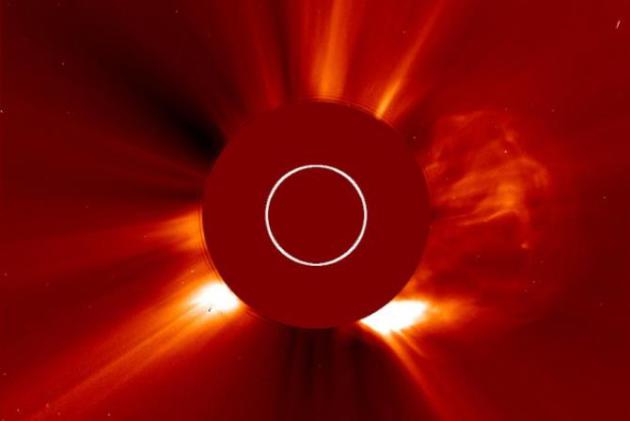
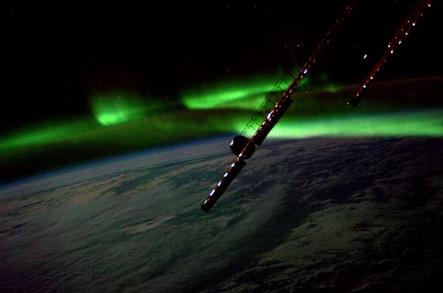

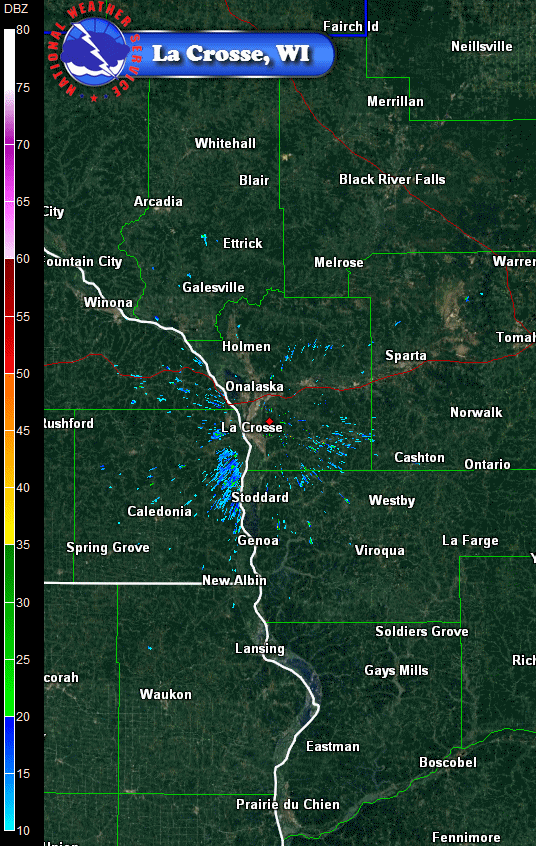
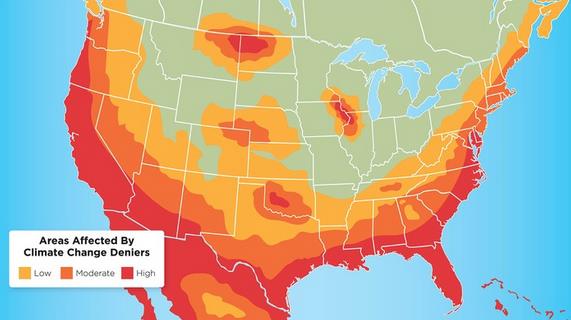
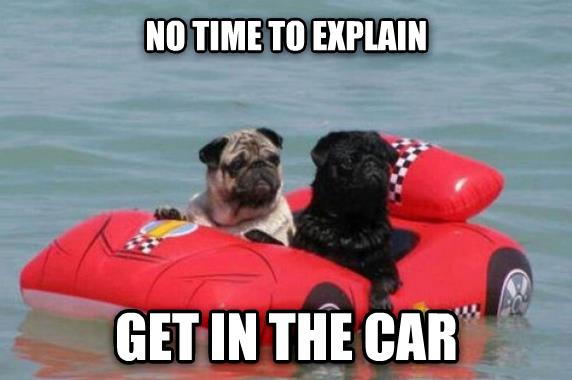
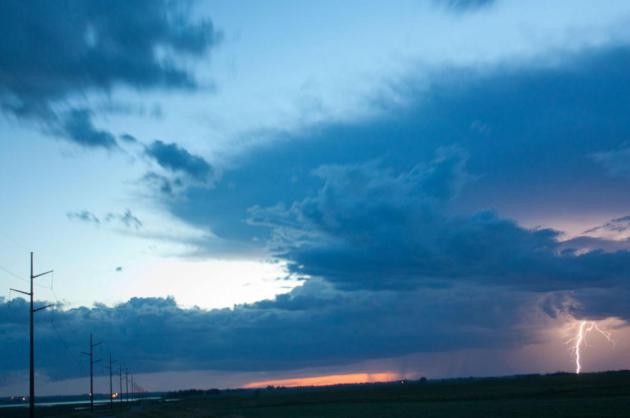
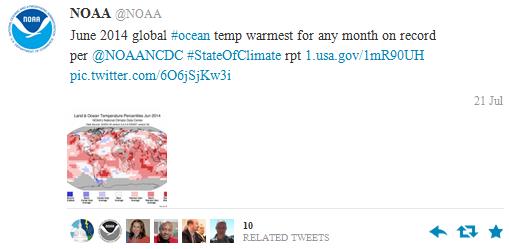
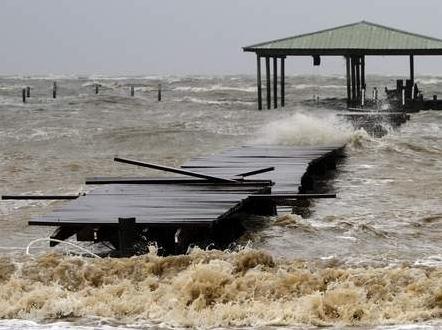
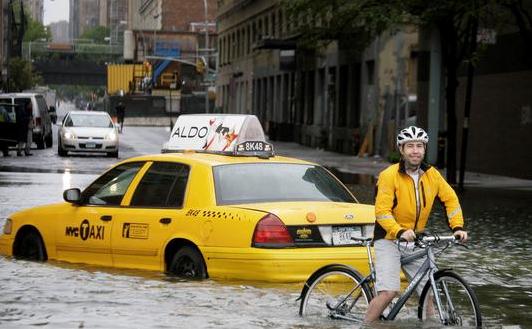

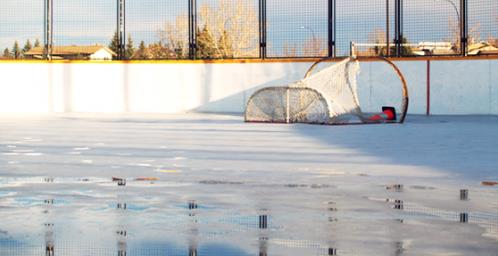

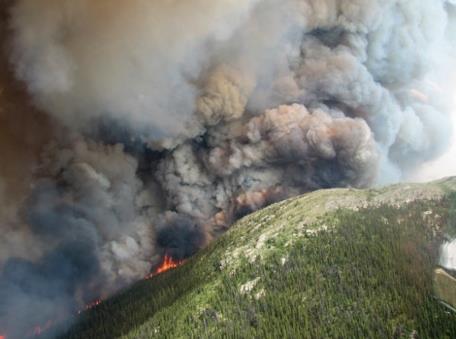
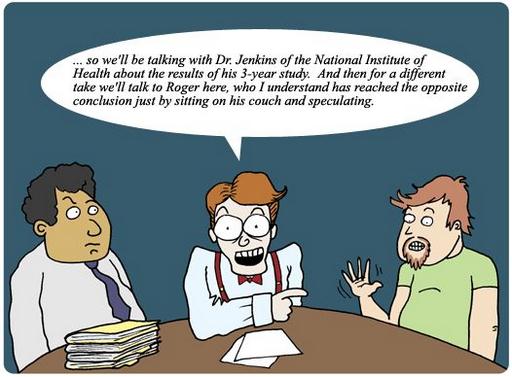


No comments:
Post a Comment